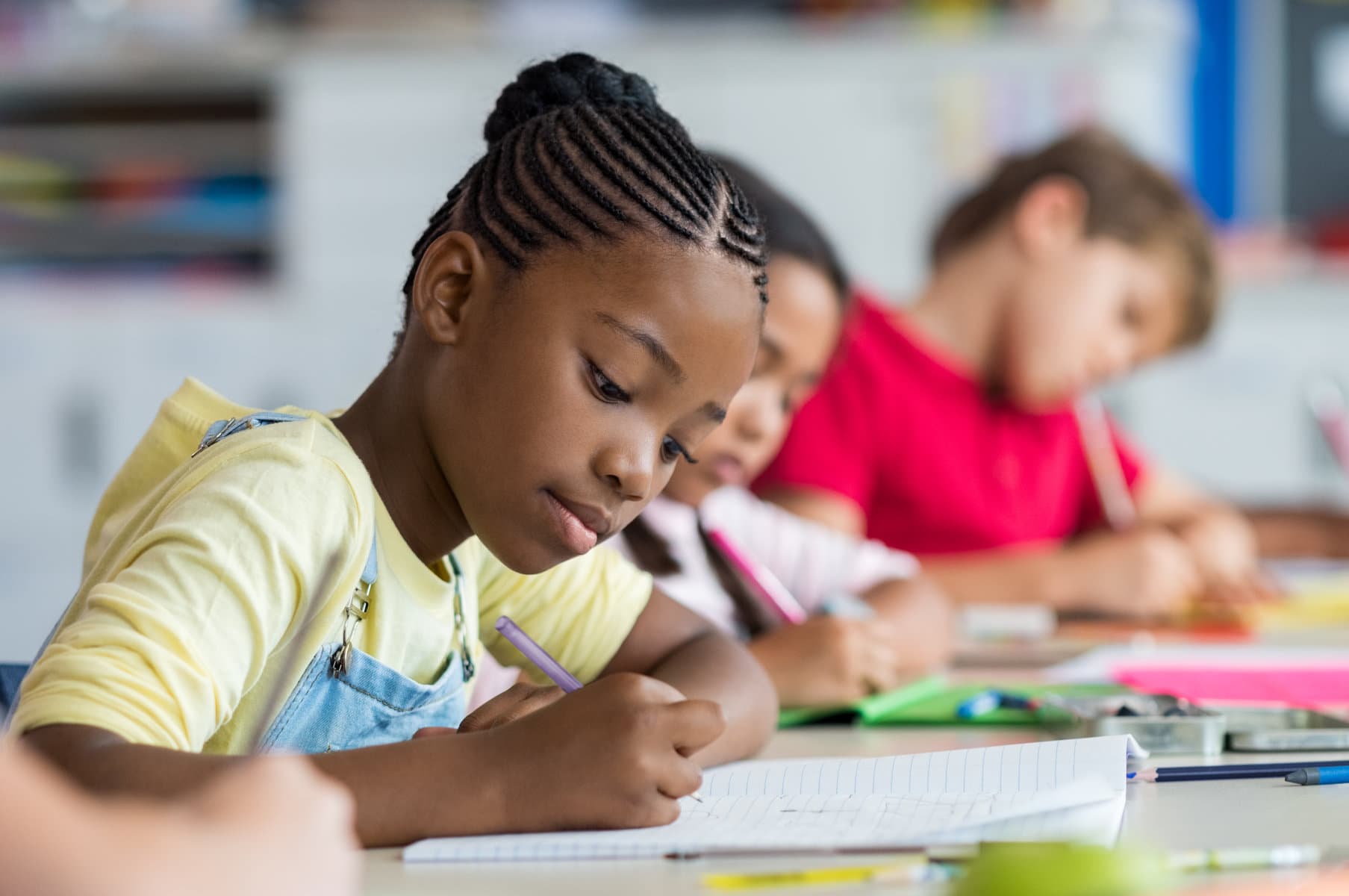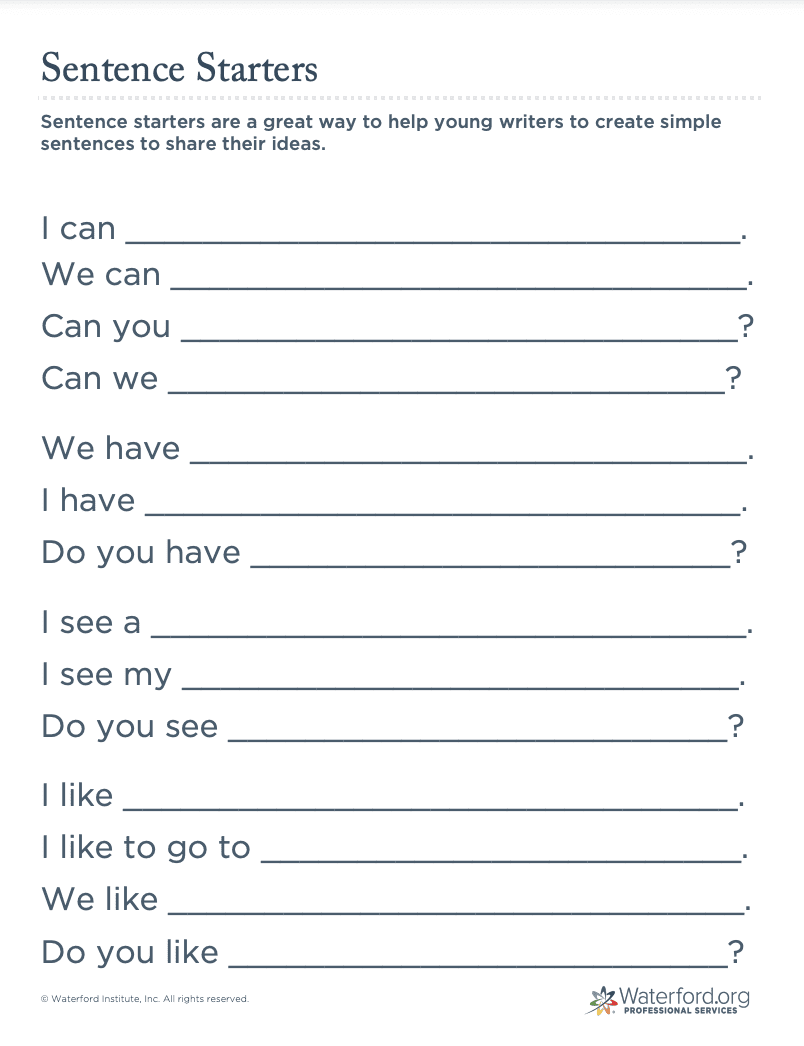Teach Communication Skills with the Science of Reading as Your Guide
Join Waterford’s Science of Reading virtual summit to explore how the brain learns to read and get strategies for effective, research-based instruction from literacy expert and Vice President of Curriculum Julie Christensen. Guidance for teachers and administrators is included!
Plus, find upcoming and on-demand video series led by early education experts through the Webinar Library, featuring topics chosen with administrators in mind, like:
- Impactful Family Engagement Made Easy
- Understanding the Six Instructional Strands for Literacy
- Professional Learning: Teaching the Science of Reading
Find out how a student’s literacy development is strongly connected to their spoken and written communication skills. Then, discover helpful strategies for teaching communication skills in the classroom—along with five free writing activities.
What Are Communication Skills and Why Are They Important for Early Literacy Development?
 Communication skills are defined here as the ability to listen, speak, read, and write effectively. Strong communication skills enable us to receive information through reading and listening, and share information with others through writing and speaking.
Communication skills are defined here as the ability to listen, speak, read, and write effectively. Strong communication skills enable us to receive information through reading and listening, and share information with others through writing and speaking.
What role does communication play in a student’s ability to read? A strong connection exists between reading comprehension and the other domains of language. Early oral language skills are connected to a student’s reading comprehension development later on. Speaking, listening, and writing skills not only work in tandem with reading development but also heavily influence and support it.
The opposite is also true. As students learn to read, their oral language skills and writing skills tend to improve as well.
For these reasons, designing our instruction to encompass and connect the reading, writing, listening, and speaking domains leads to strong overall language proficiency.
How to Develop Verbal and Written Communication Skills in the Classroom
A language-rich environment helps students build their verbal communication skills. Providing continuous opportunities for active listening and purposeful conversation is the key to building oral language skills. The development of these oral language skills means that students are expanding their vocabulary and background knowledge as well as their understanding of increasingly complex language structures, all of which support reading comprehension and writing skills.
A good conversation includes listening to understand and speaking to respond. To encourage this, make room throughout the school day for plenty of high-quality conversation. Read-alouds provide good opportunities for interactive discussion before, during, and after reading. Teachers can share these narrated tales with families to encourage read-aloud experiences at home.
Facilitate conversation for students in pairs, small groups, or with the whole class. Advise teachers to give students a prompt and tie it to something they are learning in class. As students practice speaking to prompts and listening to their classmates’ responses, they will strengthen their oral communication skills, which in turn boosts skills with written communication.
Written communication involves the reading and writing domains. We read to gather information and write to share information. Reading and writing skills are closely connected. Students should write about what they are reading and read to inform their writing. We should give students daily opportunities to write for various purposes and for various audiences. Journaling exercises provide excellent writing practice for students of all ages. Through journaling, students learn to reflect and share their viewpoints—skills that are crucial in written and verbal communication.
Modeling good communication skills is also important. After all, communication skills are central to skilled teaching—whether getting to know a class at the beginning of the school year or holding parent-teacher conferences. As educators in your school teach academic skills like reading, math, science, and more, encourage them to also model and teach communication skills.
The bottom line is this: to help students learn about anything, we should guide them to read about it, write about it, and engage in conversation about it.
5 Communication Skills Activities for Elementary Students
Communication skills allow students to receive and share information. By modeling and teaching communication skills to students, educators can help them engage more in class and interact with their peers to learn and grow.
To build students’ communication skills, share these free resources with teachers or families in your districts as classroom or home learning resources. Each one is available to download in English and Spanish.
 1. Sentence starters (Spanish: Inicio de oraciones): With this sentence starter writing activity, students can practice writing simple sentences to share their ideas.
1. Sentence starters (Spanish: Inicio de oraciones): With this sentence starter writing activity, students can practice writing simple sentences to share their ideas.
2. Word tree (Spanish: Árbol de palabras): Keep track of vocabulary words in class with this printable word tree worksheet, then encourage students to use those new words in conversation.
3. Sentence builder activity (Spanish: Constructores de oraciones): With this downloadable activity, students can practice structuring and writing a sentence.
4. Journal page (Spanish: Página de diario): Pair this printable journal page with this list of prompts to encourage reflection while students practice their communication and writing skills.
5. The Three Little Pigs (Spanish: Los tres cochinitos): Read this book with students and then extend the learning with communication-building activities designed for use in the classroom and at home (Spanish).
Read Waterford’s full Foundations of the Science of Reading article series and learn how to support your teachers with research-driven strategies as they plan for classroom instruction. Continue learning with three more articles in the series:

